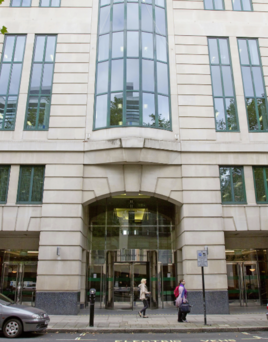More recently, the DfT has distanced itself from franchising. Transport Secretary Grant Shapps said in September 2020, as he announced the latest round of emergency contracts, that fund operators and keep services running: “The model of privatisation adopted 25 years ago has seen significant rises in passenger numbers, but this pandemic has proven that it is no longer working. Our new deal for rail demands more for passengers. It will simplify people’s journeys, ending the uncertainty and confusion about whether you are using the right ticket or the right train company.
“It will keep the best elements of the private sector, including competition and investment, that have helped to drive growth, but deliver strategic direction, leadership and accountability. Passengers will have reliable, safe services on a network totally built around them.”
Rail Delivery Group Director General Andy Bagnall said in a blog in February: “It’s easy for some to search for simple ideas from the past, like changing ownership. When we submitted our proposals for reform, we focused on what mattered to people: how to make travelling by train better by being more customer focused, more joined up and more accountable.
“That’s why we called for the franchising system to be replaced with new private sector contracts built around the needs of different customers and a new public arm’s length body to join up the system, all underpinned by reform to make fares easier.”
Yet franchising is the model laid out by law and it is working. For rail, franchising is a public-private model. The public side lets the franchise and the private side delivers it. The public as taxpayers pays for socially necessary but unremunerative services. DfT (or Transport Scotland or Transport for Wales) decides what these services are. That can leave a franchise as an overall recipient of public money. Other services the franchise runs may make money and lessen that overall load. Some may make sufficient money that they can pay DfT for the privilege of running the franchise.
Hence in 2016-17, DfT received a net payment of £776 million from train operators. In recent years, train operators have paid the owners around £200m in dividends every year. Meanwhile, DfT has been paying out record sums to Network Rail – £4.2 billion in 2016-17, for example.
So there’s a clear mechanism for train operators to feed money to and from DfT. As more passengers used rail services, either subsidies from DfT reduced or premium payments to DfT increased. The liability placed on operators was not open-ended. If things went wrong, the franchisee was committed to using contracted parent company support to make good the difference until that pre-agreed support ran dry. This happened to Virgin Trains East Coast in 2018.
It would very likely have happened to every operator last year as passenger numbers disappeared. But ministers decided to step in and keep companies going and services running. Had they not, then they’d be running services using DfT companies instead. Whatever they chose, they’d be running the trains.
So, franchising is today’s public-private model for delivering rail services. Tomorrow’s public-private partnership may have a different branding but the fundamentals that lie beneath the brand remain unchanged.
With that thought in mind, arguments about arm’s-length bodies become irrelevant. Had there been such a body between DfT and train operators - let’s call it Rail for Britain for argument’s sake - it could only have reacted to 2020’s events by seeking more money from ministers. There was no other answer if it or ministers wanted to keep trains running.
In the midst of the pandemic, train operators are already negotiating revised plans with DfT as part of their emergency agreements. These plans will be concentrating on how to recover from the loss of passengers and deciding what of their original franchise plans remain relevant. It’s hardly the right time to create a new body to stand between the two sides.
Meanwhile, Network Rail is still devolving with its managers still learning how to make the most of devolution as the centre lets go and the regions and routes pick up that baton. It’s also embarking on workforce reform. That’s challenge enough without asking NR to take on some or all of DfT’s responsibilities for train operators. Or to ask it to take on DfT’s responsibilities for deciding which enhancements to fund. That would recreate British Rail’s situation where it decided what the railway needed and ministers then cut a percentage from it.
That leaves other areas that could be reorganised. You might, for example, take the fares and ticketing side from the Rail Delivery Group to leave it as a trade lobbying body. You might take economic and safety regulation from the Office of Rail and Road. You might take the franchising teams from DfT. You might fold RSSB back into a bigger body (after all, it came from Railtrack 20 years ago). And you might take from NR its System Operator planning functions.
You could push them together into a new body, but you would do little more than rearrange deckchairs because none of these changes solve the fundamental problem of money.
If Britain’s railway is to continue to benefit from taxpayer support then it’s right that ministers decide where that money goes and in what quantity. The answer lies in that 2017 vision. If you ignore the covers and contents pages of that vision the word ‘we’ appears on all but one of its 44 pages (page 10 since you ask). In its own words, DfT acknowledges that it sits at the centre. It conducts the railway orchestra because it pays the musicians. It needs to shape up.














